11 Masonry
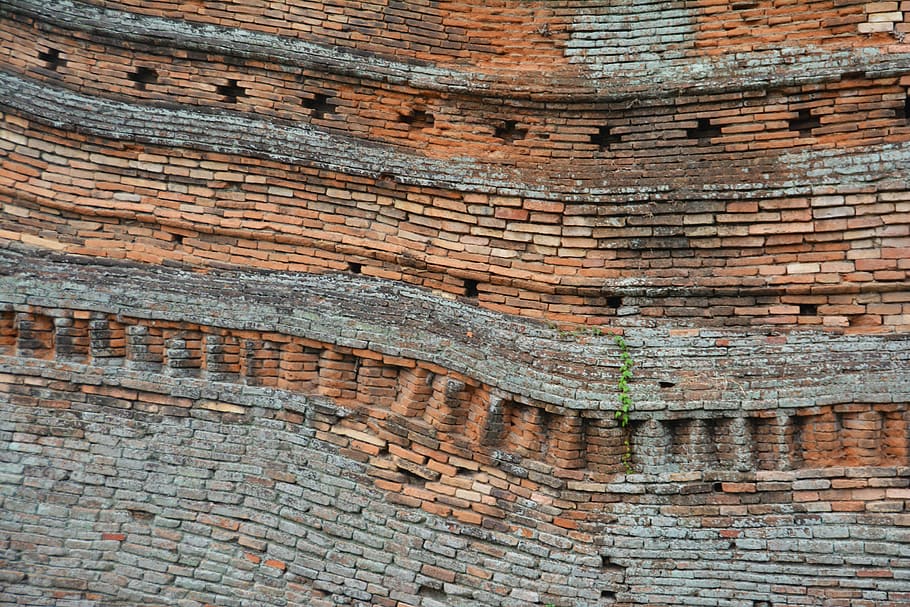 Introduction to Masonry in Architecture
Introduction to Masonry in Architecture
Masonry, at its core, is the process of constructing a structure from individual units, which are often laid and bound together using mortar. The term can also refer to the units themselves. These units can be made from various materials such as brick, stone, concrete block, glass block, and adobe. These are all robust materials and provide strength, durability, and resilience to a structure. Masonry is not just for structural purposes, but it also has an aesthetic role in architecture, adding beauty and character to the built environment.
The art of masonry is as old as civilization, with evidence of masonry construction dating back to 7000 B.C in Jericho, one of the world’s oldest inhabited cities. This period saw the use of sun-dried mud bricks, one of the earliest masonry materials.
As humans advanced, so did their masonry skills. Ancient Egyptians were pioneers of stone masonry, with iconic structures like the Great Pyramids of Giza standing as testimony to this fact. These stone constructions symbolized power and permanence, an attribute tied closely to masonry.
Masonry was also the backbone of Roman architectural prowess. The Romans introduced new materials like concrete and techniques such as the arch, vault, and dome, enhancing the possibilities of masonry architecture.
During the Middle Ages, brick and stone masonry flourished, particularly in constructing European cathedrals and castles. The intricacies of Gothic masonry showcased the versatility and flexibility of the craft.
In more modern times, the industrial revolution brought new materials like concrete blocks, providing new opportunities for masonry. Architects like Frank Lloyd Wright used masonry not just as a structural component but as an essential part of their aesthetic philosophy.
Today, masonry remains a cornerstone of architecture. With an increased focus on sustainability and resilience, it is being reimagined and innovated to meet contemporary demands, embracing new technologies while honoring its rich, diverse history. As we step into the future, masonry continues to evolve, promising an exciting journey ahead in the architectural landscape.
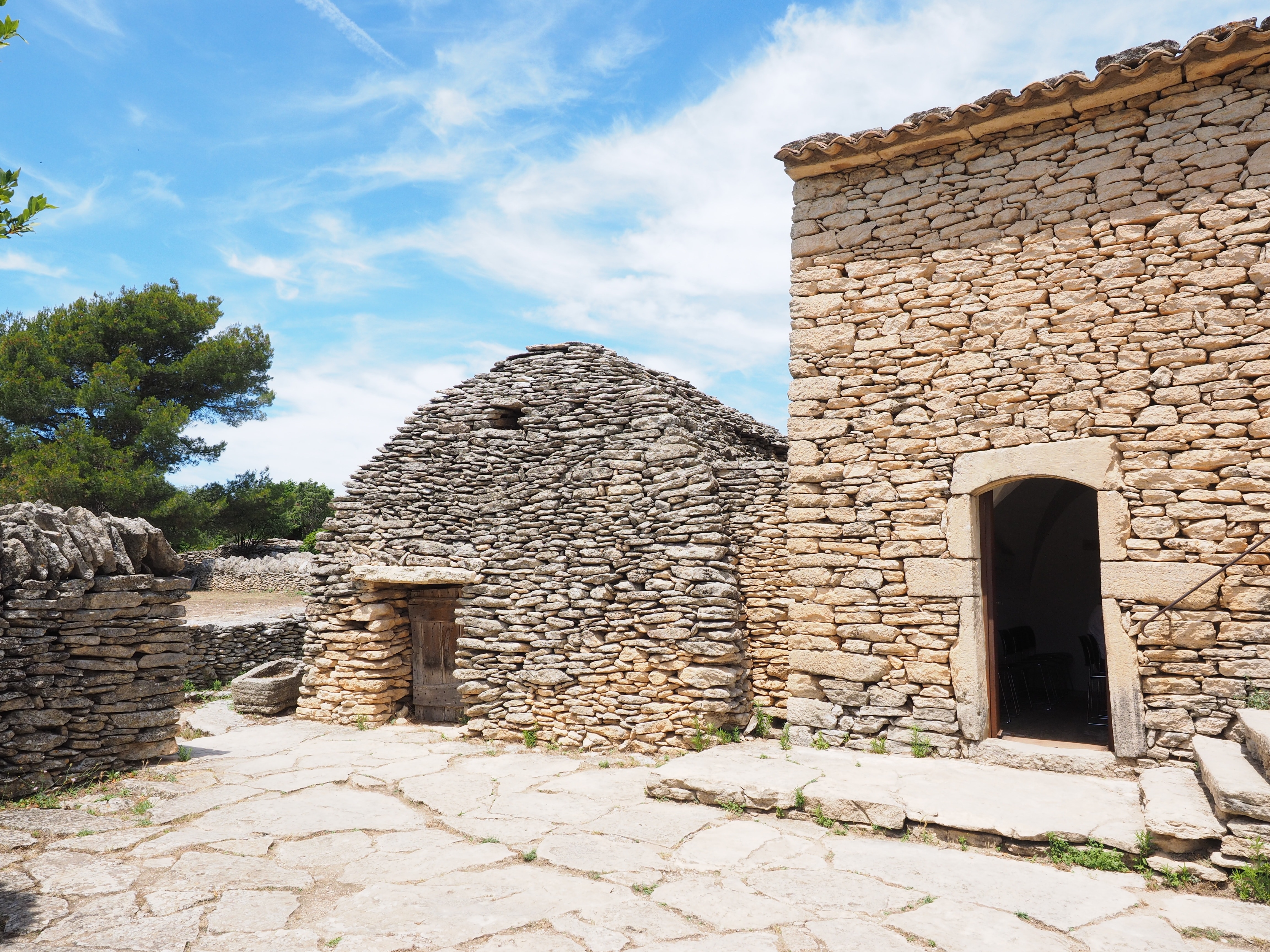 Stone Masonry: Properties, Uses, and Examples
Stone Masonry: Properties, Uses, and Examples
Stone masonry is the craft of shaping rough pieces of rock into accurate geometrical shapes, at times simple, but with some considerable intricacy, and then arranging the resulting stones, often together with mortar, to form structures.
Stone is one of the oldest and most enduring materials in masonry. Its inherent strength, durability, and resistance to weather and wear make it an excellent choice for construction. Moreover, stone also boasts aesthetic appeal, providing a timeless elegance and natural beauty that can enhance architectural design.
There are two primary types of stone masonry: rubble masonry and ashlar masonry. Rubble masonry uses stones found in nature, often in irregular shapes, while ashlar masonry uses stones cut into regular shapes with fine joints.
Stone masonry is particularly well suited to structures that require resilience and longevity. These can range from retaining walls and bridges to buildings and monuments. Notably, stone masonry is fire-resistant and can withstand extreme weather conditions. In addition, its thermal mass properties make it an energy-efficient choice, helping to keep buildings cool in summer and warm in winter.
Historically, iconic examples of stone masonry include the Great Pyramids of Egypt, the Greek Parthenon, and the Roman Colosseum. Historically, stone masonry has been beautifully exemplified in modern structures such as Antoni Gaudí’s Basilica of Sagrada Familia in Barcelona and Frank Lloyd Wright’s Fallingwater in Pennsylvania. These examples demonstrate the timeless appeal and enduring strength of stone masonry in architecture.
Brick Masonry: Properties, Uses, and Examples
Brick masonry involves using bricks – small rectangular blocks typically made from baked clay – bound together with mortar to form structures. The bricks themselves are noted for their durability, strength, and longevity. Furthermore, bricks are available in various colors and finishes, providing excellent aesthetic flexibility.
Bricks are known for resisting fire and sound, adding to their appeal for residential and commercial constructions. They also possess significant thermal mass, storing and releasing heat to help regulate indoor temperatures.
Brick masonry is versatile and is used in various structures including homes, schools, commercial buildings, and even bridges. Additionally, due to its modular nature and the relative ease of handling bricks, brick masonry is frequently used in detailed architectural features such as arches, cornices, and decorative elements.
Notable examples of brick masonry include Northern Europe’s Gothic-style brick cathedrals, the Victorian era’s brick-clad industrial buildings, and contemporary structures like Renzo Piano’s Kansai International Airport terminal in Japan.
 Concrete Blocks: Properties, Uses, and Examples
Concrete Blocks: Properties, Uses, and Examples
Concrete block masonry, or cinder block masonry, uses larger blocks made of concrete – cement, sand, and aggregate. These blocks are noted for their high compressive strength, durability, and fire resistance.
Concrete blocks are heavier and larger than bricks, which makes them ideal for larger structural applications. They are often used to construct foundations, walls in commercial and residential buildings, and retaining walls.
Their structural strength makes them particularly useful in areas prone to natural disasters such as hurricanes or earthquakes. Furthermore, they provide excellent thermal and acoustic insulation, enhancing a building’s energy efficiency and comfort.
Historically, concrete blocks were often hidden behind other materials due to their utilitarian appearance. However, modern design has embraced concrete block masonry’s raw, industrial aesthetic. Notable examples include the modernist designs of the late Brazilian architect Oscar Niemeyer, such as the Palace of Dawn in Brasília or Le Corbusier’s Unité d’Habitation in Marseille, a monument to the possibilities of concrete block construction.
Masonry Across the Ages
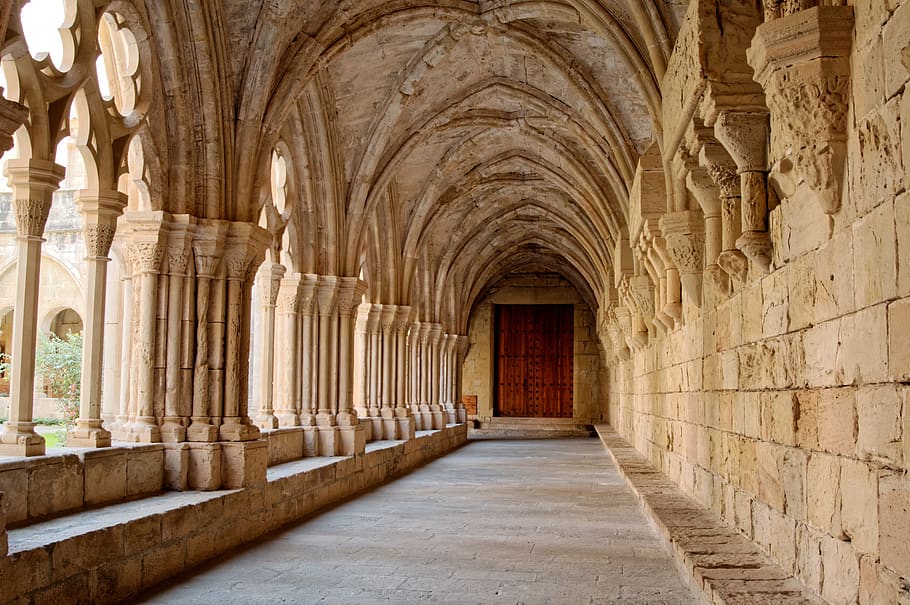 Romanesque Architecture
Romanesque Architecture
Romanesque architecture emerged in Western Europe in the late 10th century and lasted until the 12th century, giving rise to the Gothic style. It is characterized by solid, sturdy pillars, rounded arches, and barrel vaults, reflecting the architectural techniques inherited from the Roman Empire, hence the name “Romanesque.”
Masonry played a crucial role in Romanesque architecture. Builders mainly used stone for its strength and durability, allowing for massive structures with thick walls and few windows. The use of masonry also led to the development of architectural features such as the arch and the barrel vault, which were essential to the stability of these large structures.
Iconic examples of Romanesque architecture include the Abbey Church of Sainte-Foy in France and the Durham Cathedral in England. These structures represent masonry’s practical and aesthetic use in Romanesque architecture, illustrating its historical importance and influence on architectural trends.
 Gothic Architecture
Gothic Architecture
Gothic architecture originated in the 12th century, succeeding the Romanesque style, and was dominant in Europe until the 16th century. It introduced significant advancements in masonry and architectural design, including the pointed arch, the ribbed vault, and the flying buttress.
These innovations allowed structures to be built taller and more elaborate than ever. Stone masonry was the primary construction method, but the development of the flying buttress meant that walls could have larger windows, leading to the emergence of stained glass art.
The use of masonry in Gothic architecture allowed the creation of some of the most iconic religious and secular buildings of the time. Notably, the Cathedral of Notre Dame in Paris, the Chartres Cathedral, and the Palace of Westminster in London all embody the heights of Gothic architectural achievement, demonstrating the transformative potential of masonry in this era.
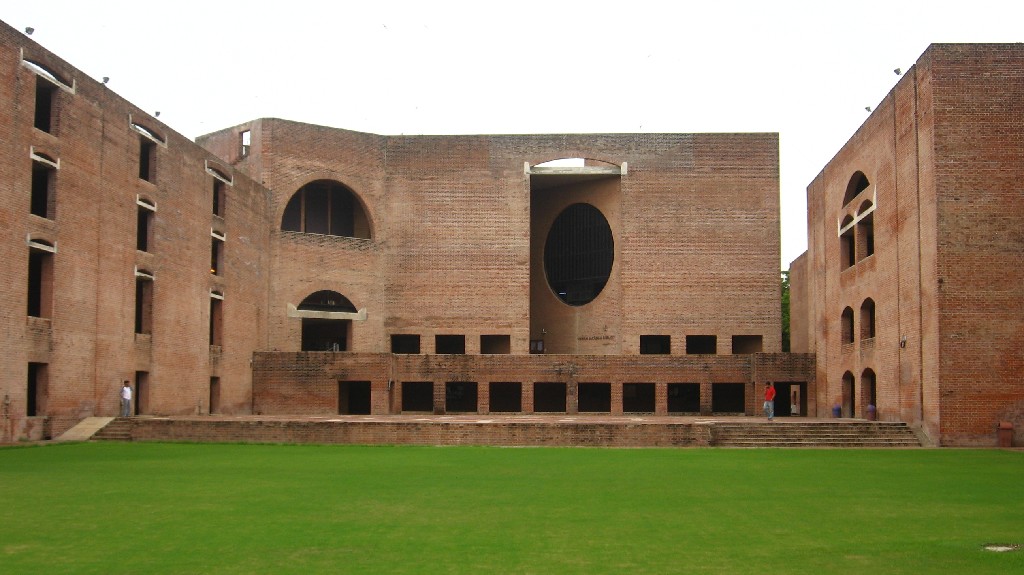
Modern Architecture and the Use of Masonry
Modern architecture emerged in the early 20th century and sought to break away from traditional architectural styles and embrace new construction methods and materials. Although modernism embraced innovative materials like steel and glass, masonry continued to play a significant role.
Brick and concrete block masonry were popular in modern architecture. They were appreciated for their inherent structural and aesthetic qualities and were often left exposed to express the “truth” of materials, a key principle of modernist architecture. Architects like Frank Lloyd Wright and Louis Kahn famously employed brick and concrete masonry in their designs, creating innovative patterns and using the modular nature of these materials to create dynamic forms and spaces.
For instance, Wright’s Fallingwater and Kahn’s National Assembly Building in Dhaka, Bangladesh, showcase the innovative use of masonry in modern architecture, blending functionality and aesthetic appeal.
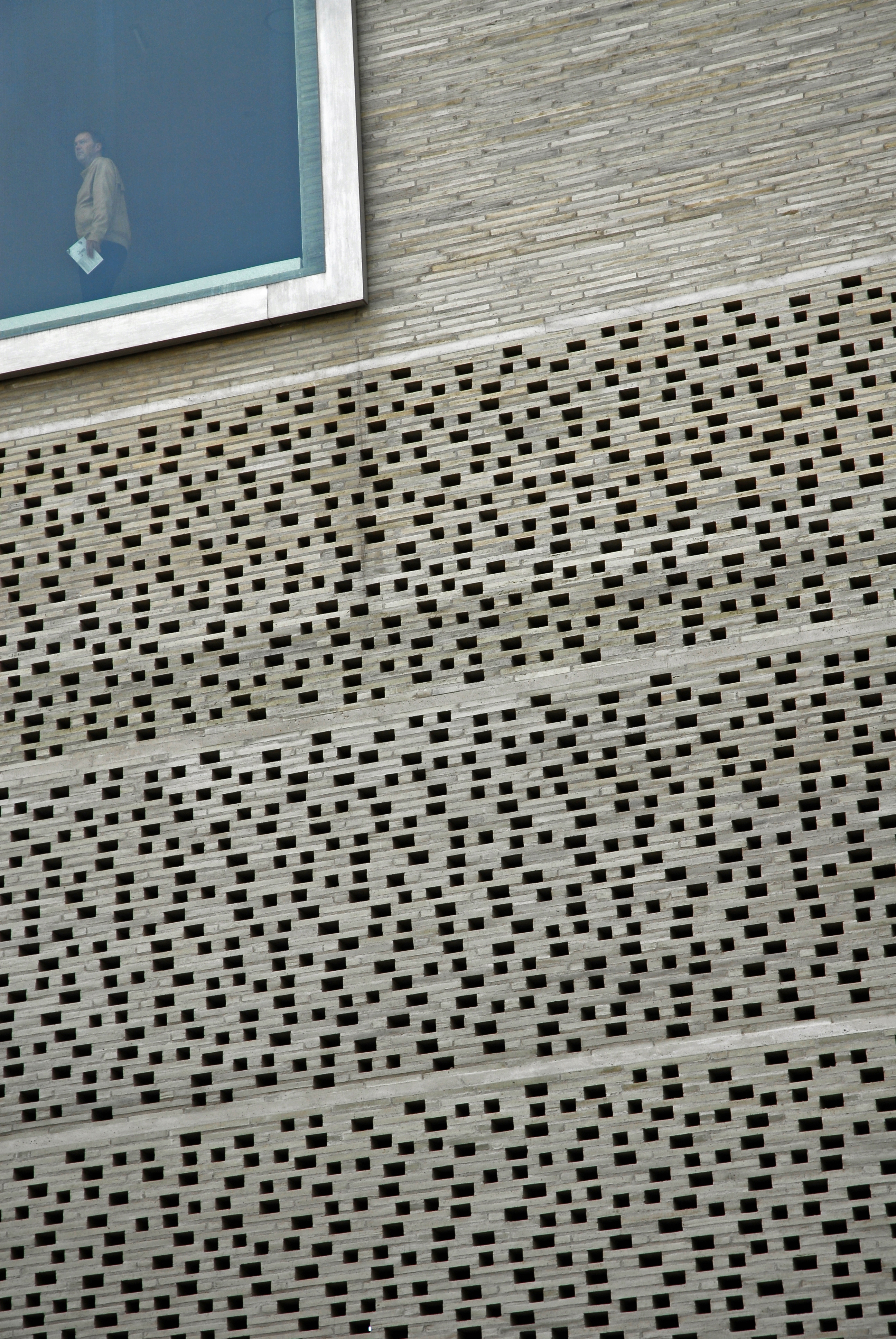
Contemporary Architecture and Masonry
Contemporary architecture, the architecture of the 21st century, reflects a broad range of styles and approaches. Sustainability, technology, and context have become critical considerations, and masonry’s durability and energy efficiency remain relevant.
Modern techniques allow creating unique and varied masonry units, from specially shaped bricks to custom concrete blocks. Moreover, digital fabrication techniques enable complex forms and patterns to be created using masonry, pushing the boundaries of the material.
Architects like Peter Zumthor and Herzog & de Meuron frequently use masonry, highlighting the material’s natural beauty and tactile quality. For example, Zumthor’s Therme Vals, a spa in Switzerland built from locally quarried stone, shows how contemporary architecture uses masonry to create structures that harmonize with their context.
Mortar and Grout in Masonry
Mortar and grout are crucial components of masonry construction. They work with masonry units (like bricks, stones, or concrete blocks) to create a solid, durable structure.
Mortar is a workable paste composed of water, sand, and a binder such as lime or cement. It serves two primary functions in masonry. Firstly, it holds masonry units together, filling the gaps to create a continuous, stable assembly. This is critical for the structural integrity of the masonry. Secondly, mortar helps to evenly distribute loads across the masonry units, preventing stress concentrations that could lead to cracking or failure.
Grout, on the other hand, is a fluid form of concrete used to fill cavities in masonry construction. In masonry, grout is often used to fill the spaces within the masonry units (cells) for reinforced masonry, enhancing the structure’s overall strength and seismic performance. The grout binds the reinforcement and the masonry units together, creating a composite structure that can resist larger forces.
In summary, both mortar and grout are essential to masonry construction. They bind the masonry units together, ensuring the structure’s stability, and contributing to its ability to withstand loads and environmental factors. Understanding their properties and uses is critical to achieving successful masonry construction.
:max_bytes(150000):strip_icc()/masonry-brick-bond-common-types-2736655-cf1ec5c2e3fe46ad83252d6dbb551a20.png) Masonry Bonds: Types and Techniques
Masonry Bonds: Types and Techniques
Masonry bonds refer to the pattern in which bricks or stones are laid to ensure the strength and stability of the resulting structure. They also provide aesthetic appeal. Here are some of the most common types:
Stretcher or Running Bond: Also known as the running bond, it’s the simplest type of bond where all bricks are laid as stretchers (long side facing the front). It’s commonly used for walls one-half brick thick.
Header Bond: Each course consists entirely of headers (short side facing the front). It’s often used in walls that are one brick in thickness.
English Bond: It consists of alternating courses of headers and stretchers. It’s known for its strength and is used in walls that are more than one brick thick.
Flemish Bond: In this type, each course consists of alternating headers and stretchers. The header is centered on the stretcher below it. This type is both strong and aesthetically pleasing.
Stack Bond: All bricks are stacked directly above one another, with all vertical joints aligned. Although less structurally sound, it provides unique visual appeal.
Masonry Joints: Types and Significance
The term ‘masonry joints’ can refer to the spaces between bricks that are filled with mortar or grout, or the way the edges and corners (mortar joints) are finished in a masonry wall. The treatment of these joints has significant implications for both the structural integrity and the aesthetic appeal of the wall.
Flush Joint: This is a simple joint where the excess mortar is cut off flush with the wall face.
Concave Joint: This popular joint type is created by pressing a rounded tool into the mortar, forming a concave surface. It helps to protect the wall from water ingress.
V-joint: A V-shaped tool creates this joint, leaving a V-shaped groove. It’s typically used for aesthetic purposes.
Weathered Joint: This joint type is sloped outward, enabling water to run off and away from the wall surface.
Raked Joint: A tool rakes out the top portion of the mortar joint, creating a shadow line. However, it’s less resistant to weather conditions.
Each type of joint has its advantages and suits different environmental conditions and aesthetic preferences, thus influencing the durability and visual characteristics of masonry work.
The Strength of Masonry Structures
Masonry structures are known for their exceptional strength and stability. This strength arises primarily from the inherent durability of the materials used (like stone, brick, or concrete blocks), but also from the way these materials are assembled.
The alignment and interlocking of masonry units and the bonding and sealing capabilities of mortar and grout create a composite structure that can bear significant loads. Masonry walls effectively distribute the weight of the structure over a broad area, reducing stress on individual elements. This load-bearing capacity makes masonry suitable for both low and high-rise constructions.
Moreover, masonry structures exhibit excellent resistance to fire, high thermal mass, and low susceptibility to rot or pests. These factors contribute to their structural integrity and long lifespan.
Masonry and Seismic Considerations
Although masonry is robust, it’s also rigid and brittle, making it susceptible to damage during earthquakes. However, modern engineering and construction practices have improved the seismic performance of masonry structures.
Firstly, reinforced masonry, where steel reinforcement is embedded within the wall and filled with grout, significantly enhances the structure’s ability to resist lateral seismic forces. These reinforcements help the masonry structure to flex and absorb energy without failing.
Secondly, seismic design principles, like ensuring mass and stiffness distribution regularity, can mitigate potential damage. Regularity allows the building to shake uniformly, reducing the likelihood of localized failures.
Moreover, specific bond patterns, like the interlocking of masonry units, can also improve seismic performance by enhancing the overall structural cohesion.
Maintenance and Durability of Masonry
Masonry structures are incredibly durable and can last for centuries with minimal maintenance. The inherent strength and weather-resistant properties of masonry materials and their resistance to pests and fire contribute to this longevity.
However, regular inspections and preventative maintenance can extend their lifespan even further. Common maintenance tasks might include cleaning, repointing (replacing deteriorated mortar), and repairing or replacing damaged masonry units. Good drainage and moisture management can also prevent water-related issues, like efflorescence or freeze-thaw damage.
It’s also essential to use compatible materials during repairs. For instance, the mortar used for repointing should have similar strength and flexibility to the original to avoid causing additional stress to the masonry.
In conclusion, while masonry requires some maintenance, its overall durability and longevity make it a cost-effective choice for many structures. Its resilience and aesthetic qualities have stood the test of time, contributing to its continued popularity in architecture.
Environmental Impact of Masonry Production
Like all building materials, masonry has an environmental impact. Producing bricks, concrete blocks, and stone involves extracting raw materials, which can lead to landscape alteration and biodiversity loss. Furthermore, manufacturing often requires significant energy inputs, contributing to carbon emissions. For instance, clay bricks are fired at high temperatures, and cement production for concrete blocks is a major source of global CO2 emissions.
However, the industry has made strides in reducing these impacts. For instance, many manufacturers now use recycled materials in their products. For instance, waste ash from power plants can be incorporated into bricks, reducing the need for virgin materials and the energy needed for firing.
Furthermore, lifecycle analyses often show that masonry’s long lifespan and low maintenance requirements can offset some of these initial environmental costs. This is especially true compared to materials that require regular replacement or high maintenance.
Masonry and Energy Efficiency
Masonry plays a critical role in the energy efficiency of buildings due to its high thermal mass. Thermal mass refers to a material’s ability to absorb, store, and release heat. In the case of masonry, this can help to moderate indoor temperatures, reducing the need for mechanical heating and cooling.
In hot climates, masonry walls absorb heat during the day, keeping interiors cool. As temperatures fall, these walls slowly release their stored heat at night, warming the building. In colder climates, masonry walls can store heat from the sun or interior heating systems, slowly releasing it as the temperature drops.
In addition, masonry structures typically have fewer gaps and are more airtight than those built with other materials, reducing heat loss and improving energy efficiency. New masonry products with integrated insulation also offer improved thermal performance.
Therefore, while masonry has an environmental impact, it also offers significant advantages in terms of energy efficiency and the long-term sustainability of buildings. This balance between impact and benefits should be considered in sustainable design and construction.
The Use of Advanced Materials in Masonry
The masonry industry has introduced various advanced materials in the quest for sustainability and improved performance. These innovations aim to enhance the performance characteristics of traditional masonry materials or provide entirely new capabilities.
For instance, insulating concrete forms (ICFs) combine the strength and durability of concrete with the insulating properties of polystyrene or polyurethane foam. This results in a highly energy-efficient wall system significantly reducing heating and cooling costs.
Another example is the development of thin brick veneers. These products, which are just a fraction of the thickness of traditional bricks, can be applied to various substrates, offering the aesthetic appeal of brick without weight or structural considerations.
Also, advances in material science have led to the creation of self-healing concrete. It contains bacteria that produce limestone when exposed to water, filling any cracks that form and thus improving durability and longevity.
Digital Fabrication and Masonry
The rise of digital fabrication technologies has brought about a renaissance in masonry construction. These technologies, which include 3D printing and robotics, can create complex forms and patterns with precision and speed that traditional methods cannot match.
3D printing, for example, allows for the production of custom masonry units. These can be designed to interlock in specific ways, creating structurally efficient and aesthetically unique assemblies. They can also include integrated systems such as channels for services or cavities for insulation.
Robotics, on the other hand, can automate the process of laying masonry units. This can increase construction speed, reduce labor costs, and improve the precision of the construction process. Robotic systems can also handle complex or repetitive patterns more efficiently than human masons.
In conclusion, the combination of advanced materials and digital fabrication technologies represents the future of masonry. These innovations offer the potential to overcome some of the traditional limitations of masonry and unlock new possibilities for its use in architecture.
Case Studies in History
Ancient/Classical Era: The Great Pyramids of Egypt
The Great Pyramids of Egypt, built around 2600 BC, are some of the most enduring examples of stone masonry architecture. Crafted from massive limestone blocks without the use of mortar, these structures showcase the extraordinary skill and knowledge of ancient Egyptian builders. The precision with which the pyramids were constructed remains a marvel of engineering, underscoring the potential of masonry to create durable, monumental architecture.
Medieval Era: The Notre Dame Cathedral
Notre Dame Cathedral in Paris, constructed in the 12th century, exemplifies the use of masonry in Gothic architecture. Its stone walls, vaulted ceilings, and flying buttresses demonstrated the innovative engineering of the era. The cathedral’s elaborate stone carvings and stunning rose windows showcase the aesthetic possibilities of masonry, making it one of the most iconic architectural landmarks in the world.
Modern Era: Fallingwater by Frank Lloyd Wright
Fallingwater, designed by Frank Lloyd Wright in 1935, ingeniously uses masonry to merge architecture with nature. The house’s local sandstone walls and concrete slabs blend seamlessly with the surrounding landscape. Wright also used masonry to craft the home’s stunning cantilevered terraces, showing how modern design could push the structural limits of traditional materials.
Contemporary Era: The Getty Center by Richard Meier
The Getty Center, designed by Richard Meier and completed in 1997, displays a sophisticated use of masonry in contemporary architecture. Its travertine-clad buildings harmonize with the California landscape, while the use of enameled steel and glass adds a modern touch. The precision-cut stone, used both for cladding and for extensive site walls, attests to the continued relevance of masonry in contemporary design.
Conclusion
As we look to the future, masonry is vital in architecture. Its longevity, robustness, and flexibility, coupled with its aesthetic appeal, are qualities that architects value. Notably, the energy efficiency inherent in masonry structures aligns with the industry’s push for sustainable design practices.
Recent advancements suggest several trends for masonry’s future. Incorporating advanced materials and technologies into masonry construction is likely to continue, improving its performance characteristics and expanding its application possibilities. For instance, self-healing and insulating concrete forms can enhance durability and energy efficiency. At the same time, digital fabrication technologies, such as 3D printing and robotics, can increase precision, speed, and design possibilities.
Architects will play a crucial role in shaping masonry’s future. Their creative vision can leverage these new capabilities to push the boundaries of what is possible with masonry. Simultaneously, they are responsible for ensuring that masonry’s environmental impact is minimized through thoughtful design, careful material selection, and integrating recycled or low-impact materials.
In sum, the future of masonry in architecture looks bright, driven by technological innovation, environmental considerations, and the enduring appeal of masonry’s tactile and aesthetic qualities.
References:
1. Abrams, D. P. (2006). “Historical Overview of Masonry Research.” Proceedings of the 8th International Masonry Conference, British Masonry Society.
2. Ashurst, J., & Dimes, F. G. (2007). Conservation of Building and Decorative Stone. Butterworth-Heinemann.
3. BIA. (2013). Technical Notes on Brick Construction. Brick Industry Association.
4. Ching, F. D. K., & Adams, C. (2001). Building Construction Illustrated. Wiley.
5. Farny, J. A., & Panarese, W. C. (1998). Concrete Masonry Handbook*. Portland Cement Association.
6. Fortunato, G., & Seffen, K. A. (2012). “Mechanical Characterisation of Masonry Constituents.” International Journal of Solids and Structures, 49(18), 2580-2587.
7. Hurd, J. C. (1981). Masonry Structural Design. McGraw-Hill.
8. Mehta, P. K., & Monterio, P. J. M. (2006). Concrete: Microstructure, Properties, and Materials. McGraw-Hill.
9. Wilson, E., Glassman, H., & Lenzen, C. (2012). Building with Masonry: Brick, Block and Concrete. Taunton Press.

